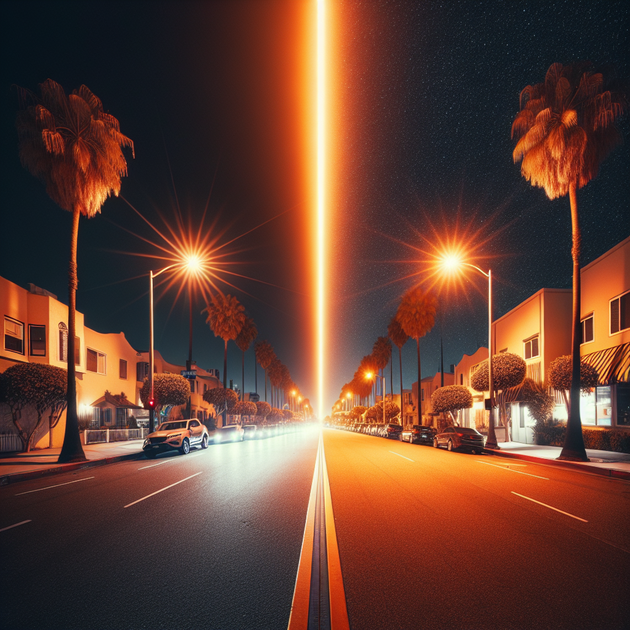Did you know that a single change in street lighting can transform an entire city’s nighttime look—and even its mood? Back in 2014, Los Angeles made a bold move by switching over 200,000 of its old street lamps to modern LED street lights. This wasn’t just about saving money (though they did plenty of that); it completely changed how LA looks and feels once the sun goes down.
Let’s break down what happened before and after this huge lighting upgrade—and why it matters more than you might think.
Why Did Los Angeles Switch to LED Street Lights?
So why mess with something as basic as street lighting? For LA officials in 2014, there were a few big reasons:
- Save Energy: The older high-pressure sodium bulbs were power-hungry. LEDs use way less electricity.
- Cut Costs: Lower power bills plus longer bulb life meant big savings for taxpayers.
- Reduce Light Pollution: LEDs can be directed more precisely, helping keep light where it’s needed (like roads and sidewalks) instead of bleeding into homes or up into the sky.
- Improve Safety: Brighter, whiter light helps drivers see better at night—and makes neighborhoods feel safer.
Before LEDs came along, those classic “orange glow” lamps set a certain mood—kind of cozy but also a bit dim and dingy. After the switch? Suddenly LA was lit up with crisp white light. Some people loved it instantly; others needed time to adjust.
The Before and After: What Really Changed?
If you look at before-and-after photos of LA’s streets from around 2014 (there are some fascinating threads online if you want visuals), you’ll spot some clear differences thanks to those new LED street lights:
- The Color Shift: Old bulbs cast a warm amber-orange light; LEDs give off a much cooler white or bluish hue.
- Visibility: Everything is sharper under LEDs—street signs pop out more clearly and shadows are less murky.
- Light Coverage: The new lamps focus their beams downward instead of scattering light everywhere. That means brighter sidewalks but darker skies (you might even see more stars now!).
Some long-time Angelenos say the switch made nighttime walks feel safer and driving less stressful. But there were also debates about whether the “new” white light felt too harsh or clinical—proving that even small city changes can spark big opinions.
The Science Behind LED Lighting
You might be wondering what makes these little bulbs so special. Here’s a quick breakdown:
- Efficiency: LEDs convert way more electricity into light instead of heat compared to older bulbs.
- Lifespan: While traditional bulbs burn out after a couple years, LEDs can last over a decade.
- Tunability: City engineers can choose different shades (“color temperatures”) of white depending on what fits best for each neighborhood or main road.
If you’re thinking about your own home or business lighting upgrades—it turns out cities like LA paved the way for everyone else.
An Angeleno’s Take on Nighttime Now
I spoke with my friend Mia who grew up in East LA and remembers both versions of her neighborhood nights. She told me:
“Before they switched to LEDs, our block had this constant orange haze at night—like living inside an old movie scene! It was kind of nostalgic but honestly not that great when I had to walk home late from work because everything felt dim and sketchy. Now with the new bright lights? I can actually see where I’m going—and I think my mom sleeps easier too.”
That story rings true for lots of folks across LA—even if not everyone loves the colder hue.
The Bigger Picture: Why It Matters for Cities Everywhere
Los Angeles wasn’t just chasing trends; their shift to LED street lights has inspired cities worldwide to take stock of their own nighttime landscapes. Switching isn’t simple (or cheap upfront), but those long-term wins—in energy savings, reduced emissions, and public safety—can really add up.
So next time you’re driving through LA at night or see your own city debating an upgrade like this, ask yourself: Would you rather have that classic orange nostalgia or a brighter future?
What would your ideal city nightscape look like?

Leave a Reply